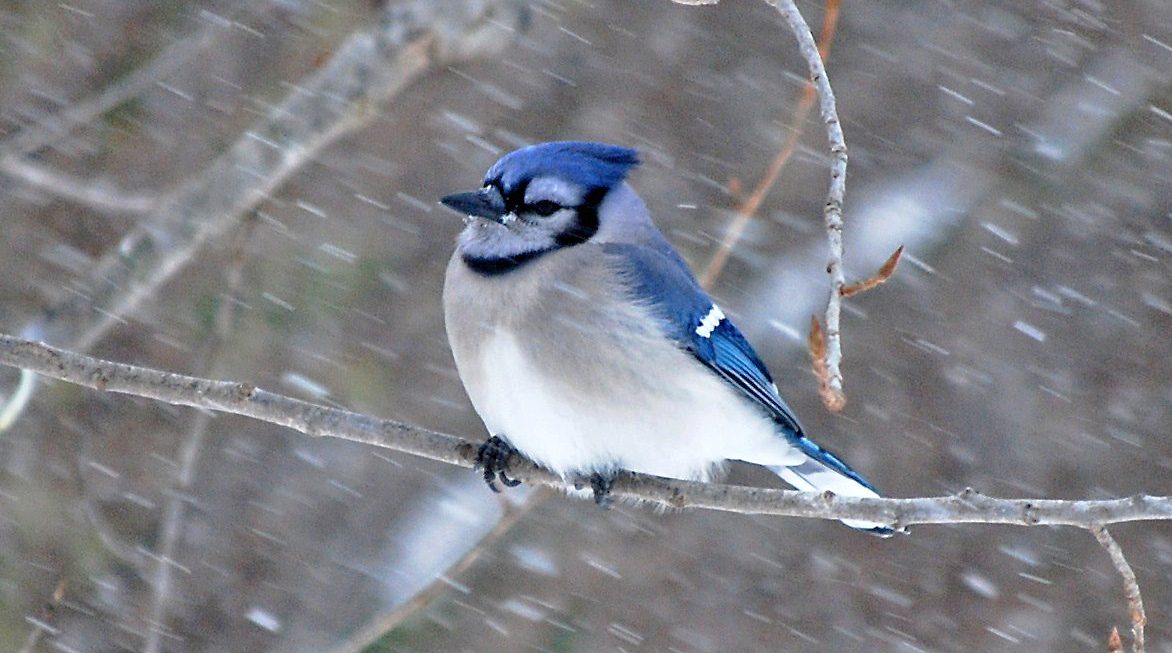
Different birds use different ways to wait out a storm. Birds that normally roost in a cavity—such as chickadees, small owls, woodpeckers—hide out in their cavity. They may also use roost boxes. Sometimes more than a dozen birds will pile into a single box to conserve heat.
Birds that roost on branches, such as jays, sparrows, cardinals, crows, etc, tend to perch on a thick branch very close to the trunk on the side most protected from wind and rain. When these songbirds (also called “perching birds”) are relaxed, their feet grasp automatically, so they can sleep while tightly clasping the branch.
Ducks, herons, and other birds that sleep on or near the water tend to find as sheltered a spot as possible—many swimmers stay out in the open water, and waders tend to gather near some debris or vegetation that protects them from at least some of the rain and wind.

